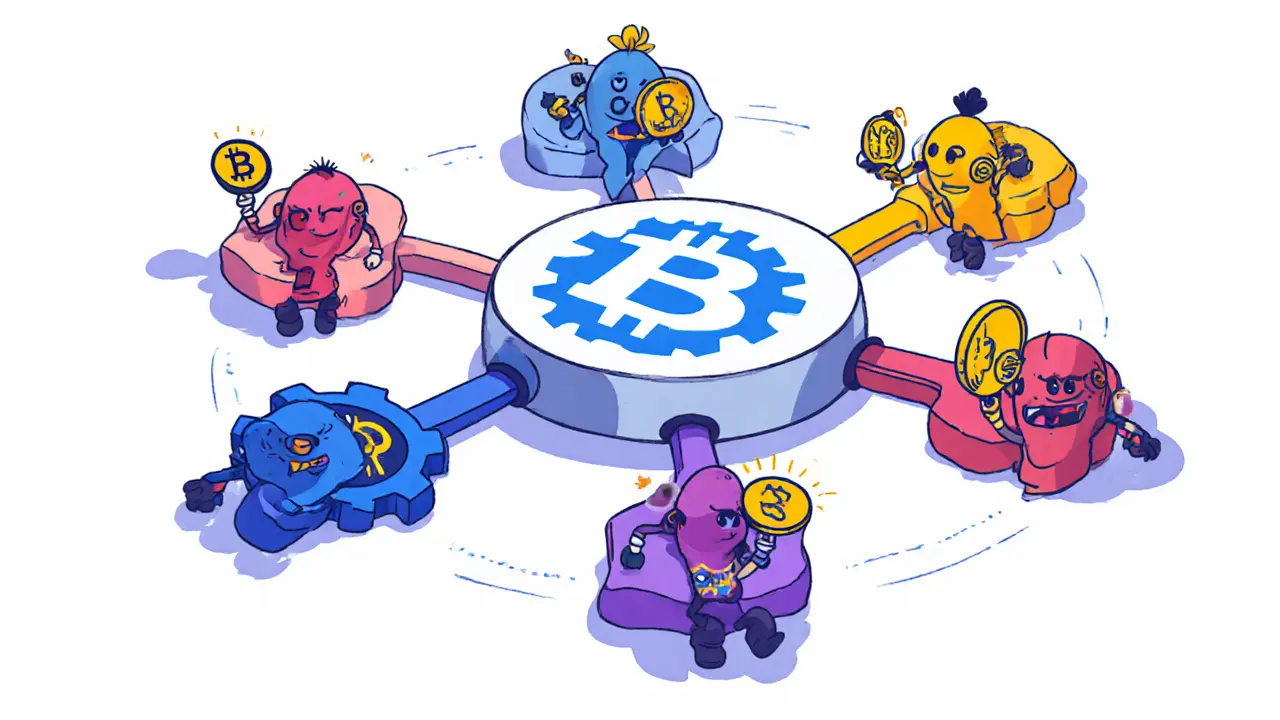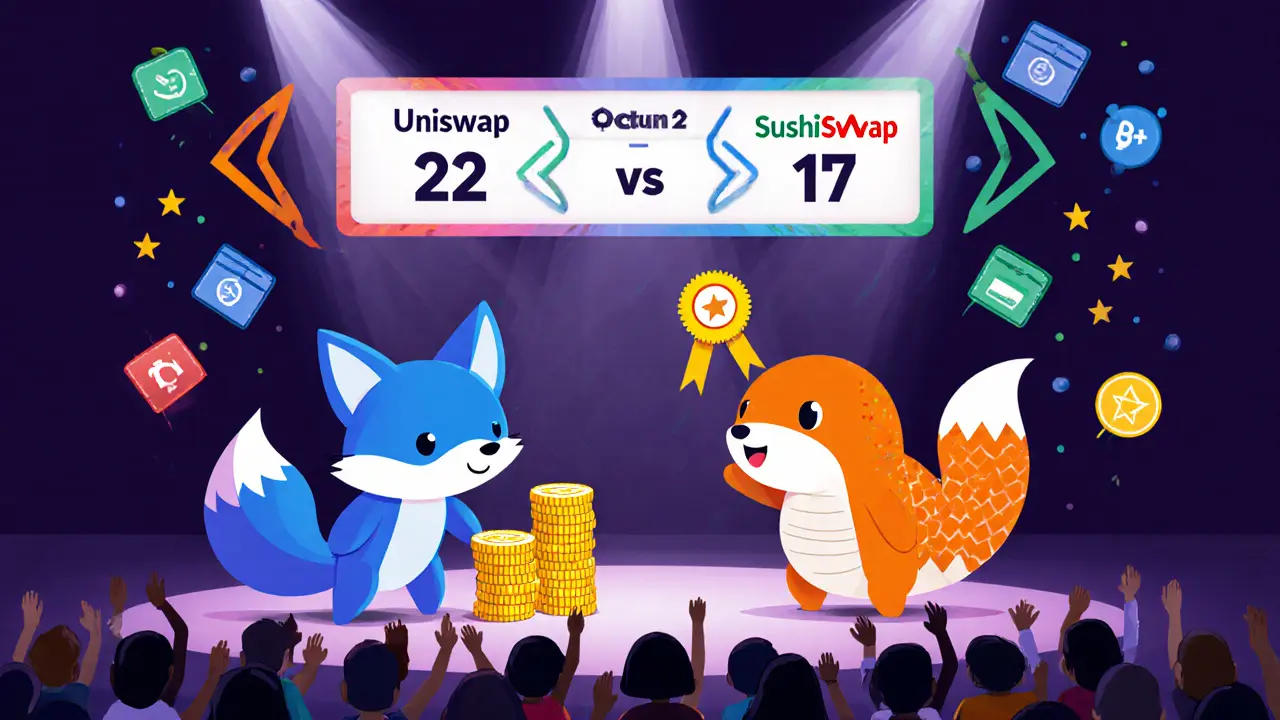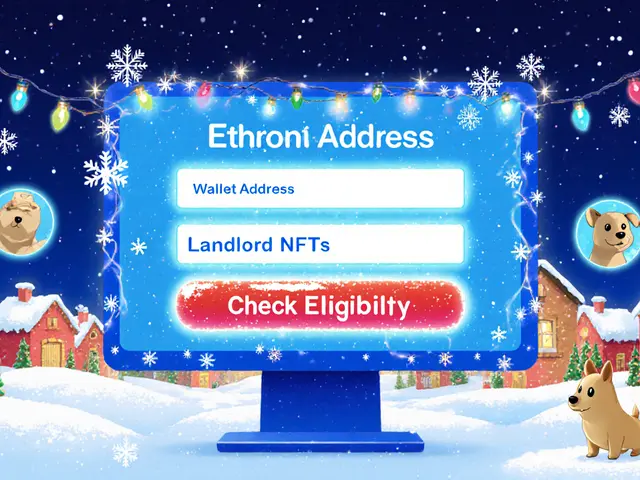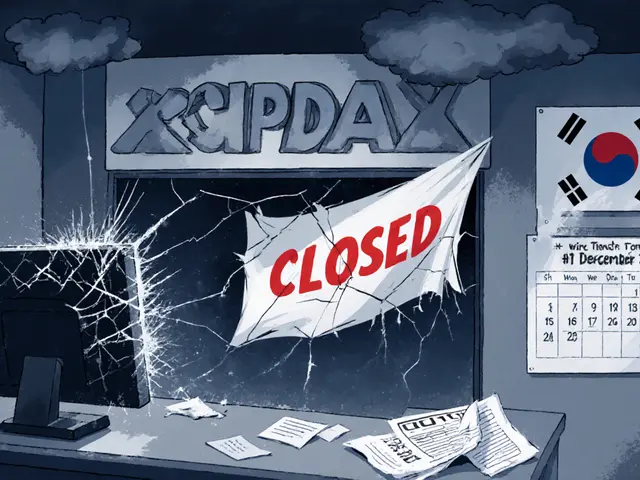Crypto Project Fundamental Score Calculator
Project Comparison Calculator
Evaluate crypto projects using the fundamental comparison framework from the article. Input scores for each pillar, select your sector, and calculate the health index.
Comparison Example
See how Uniswap and SushiSwap compared using this methodology.
SushiSwap: 17/25 health index
Based on: Technology (5), Tokenomics (4), Team (4), Market Position (5), Risk (4)
Fundamental Health Index
When assessing digital assets, Crypto Project is a blockchain‑based initiative that offers a token, protocol, or service, aiming to solve a specific problem in the crypto ecosystem. Investors and developers rely on systematic crypto project comparison to separate hype from sustainable value.
Key Takeaways
- Fundamental comparison blends traditional finance ratios with blockchain‑specific data.
- A solid framework covers technology, tokenomics, team, market position and risk factors.
- Sector‑specific checklists (DeFi, NFT, infrastructure) avoid one‑size‑fits‑all mistakes.
- Public tools like CoinGecko, Glassnode, and on‑chain explorers provide most of the data you need.
- Scoring models let you rank projects quickly and update the list as new information appears.
Why a Fundamental Lens Beats Pure Price Watching
Price charts are noisy; they react to sentiment, macro news, and short‑term speculation. A Token the native unit that fuels a crypto project’s economics that looks good today can crumble if the underlying protocol can’t scale or the team loses credibility. By focusing on intrinsic attributes-code quality, user adoption, funding depth-you create a more reliable compass for long‑term decisions.
Building a Multi‑Dimensional Comparison Framework
The most effective models treat a crypto project as a collection of inter‑related components. Below is a quick checklist that covers the five pillars most analysts use:
- Technology Stack - consensus type, layer‑1 vs layer‑2, smart‑contract language.
- Tokenomics - supply caps, inflation schedule, utility vs governance.
- Team & Governance - developer background, advisory board, on‑chain voting mechanisms.
- Market Position - user base, total value locked (TVL), liquidity depth.
- Risk Profile - regulatory exposure, code audit status, decentralization level.
Each pillar can be scored on a 0‑5 scale, then weighted according to your investment horizon. The total score becomes the “fundamental health index” you can compare across dozens of projects.

Core Metrics Explained
Below are the metrics you’ll actually pull from data providers, with a brief note on why they matter.
- Market Capitalization total dollar value of all circulating tokens - signals overall market confidence but can be inflated by low liquidity.
- Total Value Locked (TVL) the amount of assets secured in a protocol’s smart contracts - key for DeFi platforms, reflects real economic activity.
- Daily Active Users (DAU) unique wallet addresses interacting with the protocol each day - a proxy for network effect.
- Funding Raised venture or grant capital invested in the project - shows runway and external validation.
- Code Audits security reviews performed by reputable firms - lowers exploit risk.
- On‑Chain Analytics data derived from blockchain explorers, e.g., transaction counts, gas fees - provides granular insight into usage trends.
Sector‑Specific Checklists
Not all pillars weigh the same in every niche. Here’s how you can fine‑tune the framework for three common sectors.
DeFi Platforms (e.g., DEXes, Lending)
- Liquidity depth and slippage metrics.
- Smart‑contract audit count and severity.
- Yield sustainability - compare APR vs underlying asset risk.
- Governance token distribution - decentralization score.
NFT Marketplaces & Scaling Solutions
- Transaction cost (gas) per mint/sale.
- Support for cross‑chain NFTs.
- Partnerships with major artists or brands.
- Layer‑2 adoption rate - look at roll‑up usage.
Infrastructure & IoT Networks
- Node count and geographic distribution.
- Data throughput and latency benchmarks.
- Real‑world use‑case revenue (e.g., Helium hotspot earnings).
- Regulatory compliance - spectrum licenses, data privacy.
How to Gather Reliable Data
Public platforms have made data collection almost painless. Below is a quick guide:
- CoinGecko / CoinMarketCap - market cap, circulating supply, price charts.
- Glassnode - on‑chain metrics like active addresses, realized cap.
- Dune Analytics - custom SQL queries for any on‑chain data point.
- Company filings & Fundraising decks - funding rounds, investor lists.
- GitHub / GitLab - commit frequency, contributor count, open‑source health.
- Social sentiment tools - Reddit, Twitter volume, community engagement scores.
Cross‑checking at least three sources for any metric reduces the chance of a data‑quality error.
Live Example: Uniswap vs SushiSwap
Both are automated market makers (AMMs) in the DeFi sector, but their fundamentals differ.
| Project | Daily Active Users | Funding Raised | Moat | Sector |
|---|---|---|---|---|
| Uniswap | 5M | $200M | First‑mover liquidity depth | DeFi DEX |
| SushiSwap | 2.5M | $150M | Community incentives, token‑based rewards | DeFi DEX |
Scoring each pillar (technology = 5 for both, tokenomics = 4 for Uniswap, 3 for SushiSwap, team = 4 vs 3, market position = 5 vs 3) yields a total index of 22 for Uniswap and 17 for SushiSwap. The numbers illustrate how a systematic approach surfaces the strength of Uniswap’s liquidity moat.

Common Pitfalls & Risk Adjustments
Even a solid framework can be tripped up by hidden risks.
- Regulatory shocks - a sudden ban in a major jurisdiction can wipe out TVL instantly. Always add a “regulation” weight to the risk score.
- Code clone danger - many projects copy open‑source contracts. Check commit history and unique innovation points to avoid “me too” traps.
- Funding decay - large rounds don’t guarantee long‑term runway. Look at burn rate and cash‑on‑hand metrics.
- Community decay - a shrinking Discord or Telegram indicates waning interest. Track monthly active members.
Putting It All Together - A Simple Scoring Model
Here’s a ready‑to‑use spreadsheet layout you can copy:
- List each project in rows.
- Create columns for the 12 metrics described above.
- Assign a score 0‑5 for each metric.
- Apply sector‑specific weights (e.g., Liquidity 30% for DEXes).
- Sum the weighted scores - the highest total signals the strongest fundamentals.
Update the scores quarterly. The model is lightweight enough for retail investors but robust enough for fund managers.
Next Steps for Practitioners
Now that you have a blueprint, consider these actions:
- Pick three projects you’re already watching and run the scoring model.
- Set up a Google Sheet that pulls live market cap from CoinGecko API.
- Schedule a monthly “fundamental review” where you re‑run the audit and note any metric shifts.
- If you manage a launchpad, use the model as a gate‑keeping checklist before accepting new token sales.
Following a repeatable process will keep emotion out of the equation and let data drive your crypto decisions.
Frequently Asked Questions
How often should I re‑evaluate a crypto project's fundamentals?
A quarterly refresh works for most retail investors. If you’re a fund manager or launchpad operator, a monthly review is safer because funding rounds, audits, or regulatory updates can happen quickly.
Can I rely solely on on‑chain metrics for comparison?
On‑chain data is powerful but blind to off‑chain factors like legal risk, partnership announcements, or team changes. Blend on‑chain with off‑chain signals for a complete picture.
What weight should I give to community sentiment?
Community health usually accounts for 10‑15% of the total score. Track Discord member growth, tweet volume, and sentiment scores to quantify it.
Is a high market cap always a good sign?
Not necessarily. A large cap can hide low liquidity or an over‑inflated supply. Pair market cap with liquidity depth, TVL, and user metrics to gauge real strength.
How do I handle projects that span multiple sectors?
Create a hybrid checklist that merges relevant pillars from each sector. For example, a DeFi‑enabled NFT platform should be evaluated for both liquidity depth and NFT mint costs.













People Comments
Great breakdown of the scoring methodology! The weighting system makes sense, especially the sector‑specific tweaks for DeFi and NFT projects. I especially like the way the risk profile is capped at 0.2 so it doesn’t dominate the overall health index. For newcomers, just remember to keep each pillar within the 0‑5 range to avoid the “Invalid inputs” warning. 👍